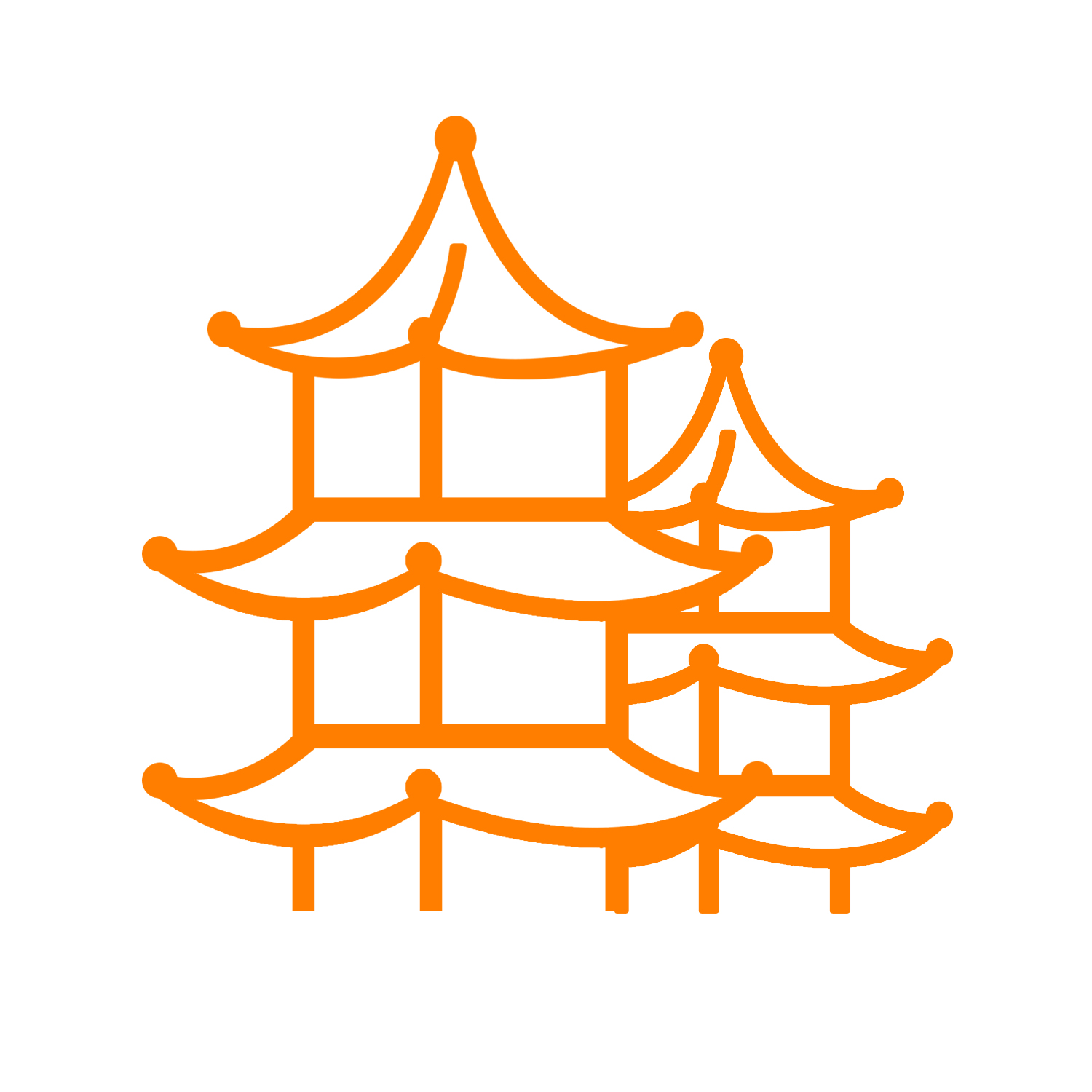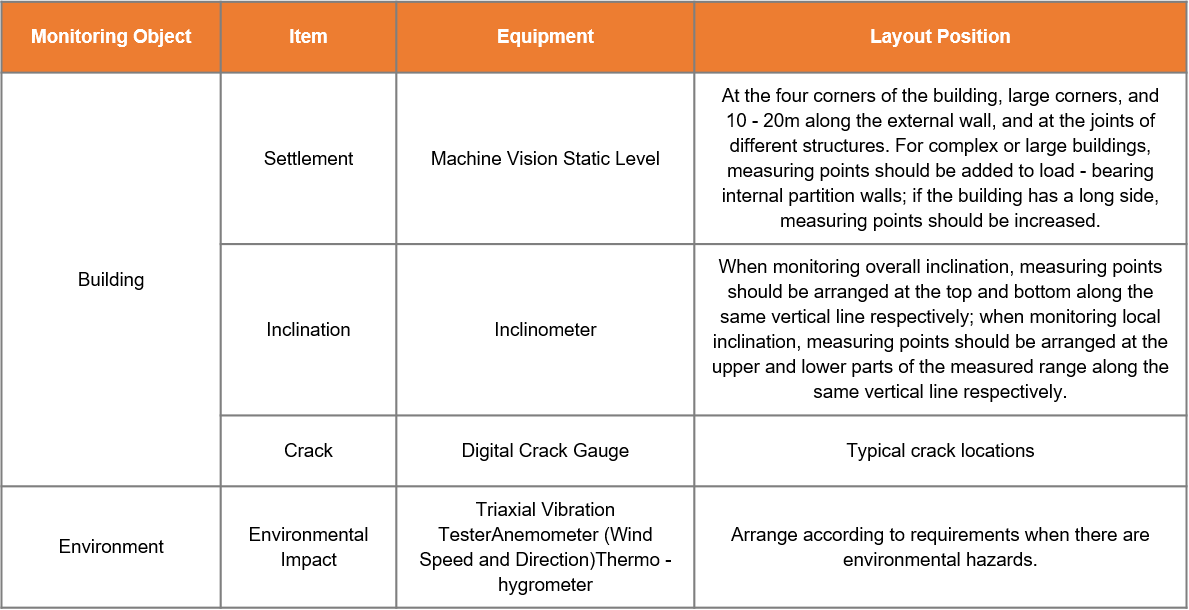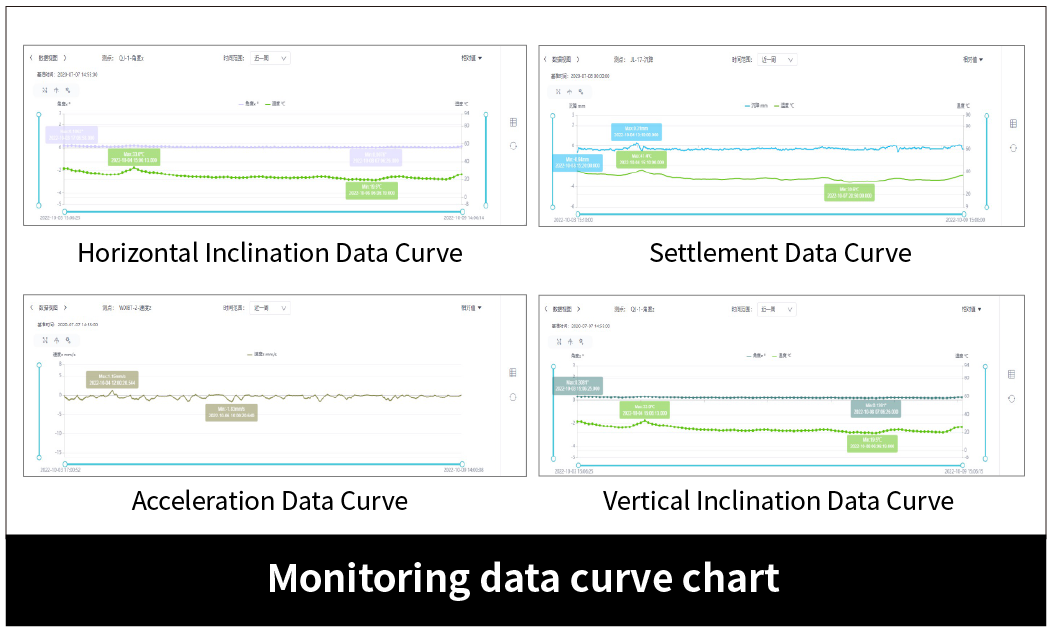
Structural monitoring of building constructions should focus on deformation monitoring, which boasts the advantage of "high measurement accuracy" and enables effective data analysis to reflect the structural health status. Deformation measurement includes the monitoring of "settlement" and "inclination". Meanwhile, structural cracks will reduce structural stiffness, which in turn leads to increased structural deformation. Therefore, "cracks" are also an important monitoring item in building monitoring.
For some buildings affected by surrounding construction activities, vibrations may cause fatigue damage to the buildings. In such cases, environmental monitoring items such as "vibration", "wind speed and direction", and "temperature and humidity" can also be monitored.


▊ A Health Monitoring Project for a Heritage Temple Building
This temple has a history of over 100 years and is a Key National Cultural Relics Protection Unit. Considering the long construction history of the building, to enable early warning of potential diseases and damages to the building caused by structural aging, monitoring of structural settlement, inclination, vibration, and cracks is carried out. Specifically, 20 non-contact hydrostatic leveling gauges, 12 inclinometers, 5 triaxial accelerometers, and 3 digital crackmeters are used to monitor the respective physical quantities.


During the monitoring period, the changes in various deformation characteristic data are small, none of which exceed the monitoring alarm thresholds, and the structure maintains good stability.
▊ A Building Structure Monitoring Project
The main structure of the building adopts a hybrid structure and was built in 1985. It is planned to carry out strengthening and maintenance on this building. To grasp the safety and stability status of the building during the strengthening construction, automated monitoring of the building structure is implemented.
In accordance with the requirements of the Code for Building Deformation Measurement, intelligent vision gauges inclinometers, strain gauges, and environmental temperature and humidity meters are respectively used to monitor items such as settlement, inclination, strain, and environmental temperature and humidity. Additionally, video surveillance is supplemented for real-time monitoring of the surrounding conditions of the building, facilitating better guidance for subsequent construction.


Since the installation of the monitoring system, the equipment has operated stably. From the perspective of monitoring data, the building structure is in a healthy state with no obvious significant deformation.
© Toehold Engineering Technology Co., Ltd.Shanghai